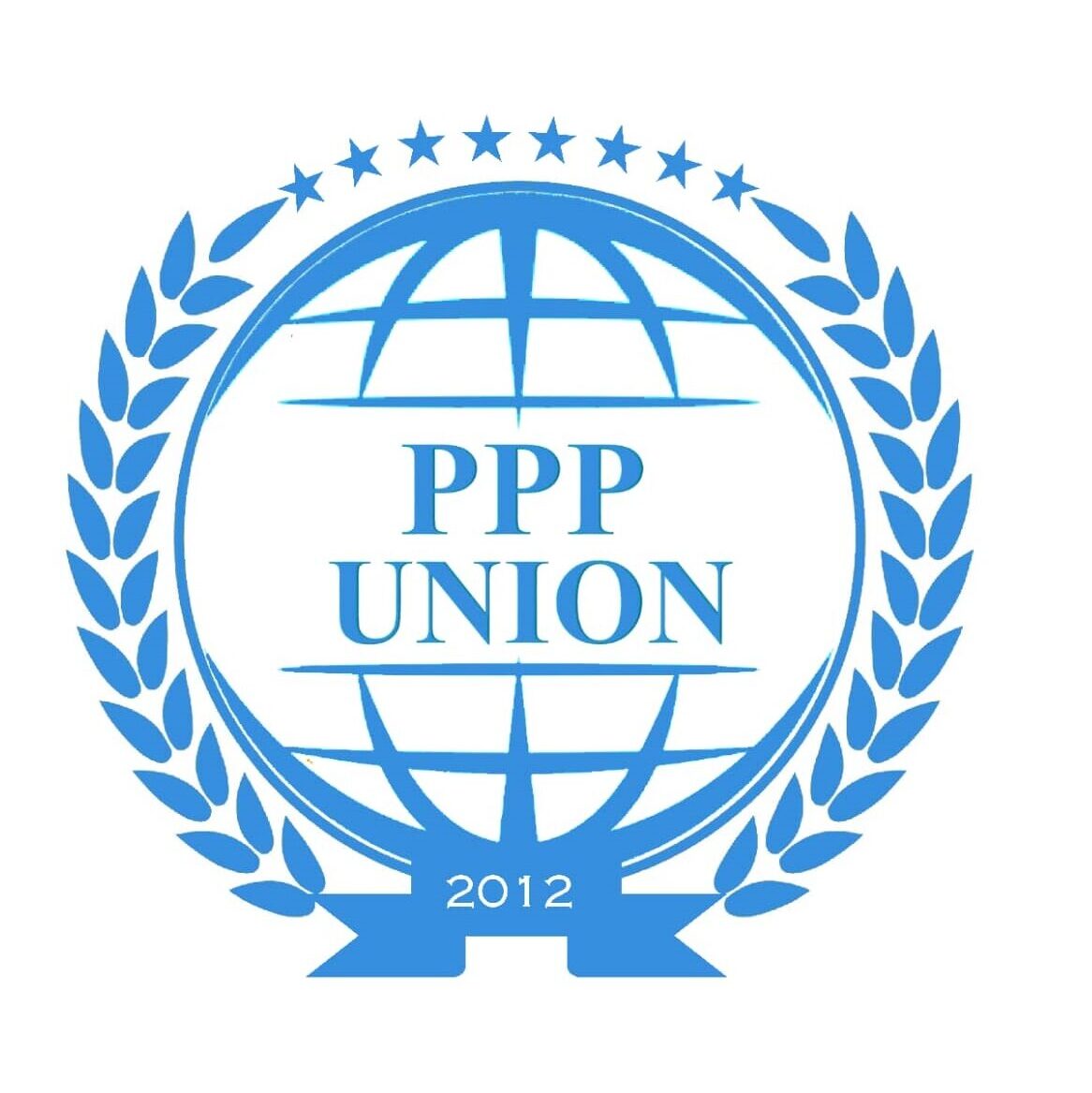In September 2015, countries adopted a set of Sustainable Development Goals (SDGs) to end poverty, protect the planet and ensure prosperity for all. The Sustainable Development Goals are the proposal to realize an improved and more sustainable future for all. They refer to the global tasks we face, including those related to poverty, inequality, climate change, environmental degradation, peace, and justice. The 17 Goals are all unified, and to leave no one behind, it is important that we achieve them all by 2030. The Sustainable Development Goals (SDGs) or Global Goals are a collection of seventeen interlinked objectives designed to serve as a “shared blueprint for peace and prosperity for people and the planet, now and into the future. The special purpose of the PPP is (SDGs). The 17 Sustainable Goals also calls Global Goals, the brief explanation of (SDGs) projects is below.
GOAL 1: NO POVERTY


SDG 1 is to: “End poverty in all its forms everywhere. Achieving SDG 1 would end extreme poverty globally by 2030. One of its indicators is the proportion of the population living below the poverty line. The data gets analyzed by sex, age, employment status, and geographical location (urban/rural). The goal has seven targets and 13 indicators to measure progress. The five outcome targets are: eradication of extreme poverty; reduction of all poverty by half; implementation of social protection systems; ensuring equal rights to ownership, basic services, technology, and economic resources; and the building of resilience to environmental, economic, and social disasters. The two targets related to means of implementation SDG 1 are mobilization of resources to end poverty; and the establishment of poverty eradication policy frameworks at all levels.
GOAL 2: END HUNGER, ACHIEVE FOOD SECURITY AND IMPROVED NUTRITION AND PROMOTE SUSTAINABLE AGRICULTURE

Feeding the world without destroying more nature will become increasingly difficult and eventually impossible under sustained population growth. According to the World Resources Institute, the calorie requirements of a population of 10 billion are 56% higher than current total crop production. Agriculture is already a leading cause of environmental degradation and further conversion of land for farming purposes will have devastating consequences for biodiversity and our climate. A landmark 2019 report by the EAT-Lancet Commission states “Healthy diets from sustainable food systems are possible for up to 10 billion people but become increasingly unlikely past this population threshold.” Our population is projected to exceed 10 billion in the second half of the century. When population growth exceeds development progress, past achievements are quickly undone – the number of people suffering from hunger has increased again over the past three years. Experts have warned that vulnerable areas like the Sahel face catastrophe unless action is taken to reduce fertility rates.
Goal 3: GOOD HEALTH AND WELL-BEING


Goal 4: QUALITY EDUCATION
SD

GOAL 5: IMMUNISATION = EMPOWERED WOMEN AND GIRLS


SDG 5 is to: “Achieve gender equality and empower all women and girls.” Indicators include, for example, having suitable legal frameworks and the representation by women in national parliament or in local deliberative bodies. Numbers on forced marriage and female genital mutilation/cutting (FGM/C) are also included in another indicator. This section has 6 indicators. (1)-ending all forms of discrimination against all women and girls everywhere. (2)–ending violence and exploitation of women and girls. (3)–eliminating harmful practices such as child early and forced marriage and female genital mutilation. (4)–increasing value of unpaid care and promoting shared domestic responsibilities. (5). ensuring full participation of women in leadership and decision-making. (6)–ensuring access to universal reproductive rights and health.
The three means of implementation targets are: (1)-fostering equal rights to economic resources, property ownership, and financial services for women. (2)- promoting empowerment of women through technology. (3)– adopting and strengthening policies for gender equality and supporting legislation to enforce it.
Goal Number 6 ENSURE ACCESS TO WATER AND SANITATION FOR ALL.


“Ensure availability and sustainable management of water and sanitation for all.” The Joint Monitoring Program (JMP) of WHO and UNICEF is responsible for monitoring progress to achieve the first two targets of this goal. Important indicators for this goal are the percentages of the population that uses safely managed drinking water and has access to safely managed sanitation. The JMP reported in 2017 that 4.5 billion people do not have safely managed sanitation. Another indicator looks at the proportion of domestic and industrial wastewater that is safely treated. The six outcome targets include: Provide safe and affordable drinking water, end open defecation, and provide access to sanitation, and hygiene, improve water quality, wastewater treatment and safe reuse, increase water-use efficiency and ensure freshwater supplies, implement IWRM, protect and restore water-related ecosystems.
Goal Number 7: EFFICIENT EQUIPMENT = CLEANER ENVIRONMENT
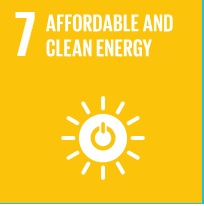

Goal 8: DECEN T WORK AND ECONOMIC GROWTH (HEALTHY POPULATION = MORE PRODUCTIVE WORKFORCE)


SDG 8 is to: “Promote sustained, inclusive and sustainable economic growth, full and productive employment and decent work for all.” Important indicators for this goal include economic growth in least developed countries and the rate of real GDP per capita. Further examples are rates of youth unemployment and occupational injuries, or the number of women engaged in the labor force compared to men.
SDG 8 HAS TWELVE TARGETS.
(1)- SUSTAINABLE ECONOMIC GROWTH
Sustain per capita economic growth in accordance with national circumstances and, in particular, at least 7 per cent gross domestic product growth per annum in the least developed countries.
(2)- DIVERSIFY, INNOVATE AND UPGRADE FOR ECONOMIC PRODUCTIVITY
(3)- PROMOTE POLICIES TO SUPPORT JOB CREATION AND GROWING ENTERPRISES
(4)- IMPROVE RESOURCE EFFICIENCY IN CONSUMPTION AND PRODUCTION
(5)- FULL EMPLOYMENT AND DECENT WORK WITH EQUAL PAY.
(6)- PROMOTE YOUTH EMPLOYMENT, EDUCATION AND TRAINING.
(7)- END MODERN SLAVERY, TRAFFICKING AND CHILD LABOUR.
(8)- PROTECT LABOUR RIGHTS AND PROMOTE SAFE WORKING ENVIRONMENTS.
(9)-PROMOTE BENEFICIAL AND SUSTAINABLE TOURISM
(10)- UNIVERSAL ACCESS TO BANKING, INSURANCE AND FINANCIAL SERVICES,
(11)- INCREASE AID FOR TRADE SUPPORT
(12)- DEVELOP A GLOBAL YOUTH EMPLOYMENT STRATEGY
GOAL 9: INDUSTRY, INNOVATION, AND INFRASTRUCTURE


SDG 9 is to: “Build resilient infrastructure, promote inclusive and sustainable industrialization, and foster innovation.” Indicators in this goal include for example, the proportion of people who are employed in manufacturing activities, are living in areas covered by a mobile network, or who have access to the internet. An indicator that is connected to climate change is “CO2 emissions per unit of value added.“
A functioning and resilient infrastructure is the foundation of every successful community. To meet future challenges, our industries and infrastructure must be upgraded. For this, we need to promote innovative sustainable technologies and ensure equal and universal access to information and financial markets. This will bring prosperity, create jobs, and make sure that we build stable and prosperous societies across the globe. SDG 9 has eight targets, and progress is measured by twelve indicators. The first five targets are outcome targets: develop sustainable, resilient, and inclusive infrastructures; promote inclusive and sustainable industrialization; increase access to financial services and markets; upgrade all industries and infrastructures for sustainability; enhance research and upgrade industrial technologies. The remaining three targets are means of implementation targets: Facilitate sustainable infrastructure development for developing countries; support domestic technology development and industrial diversification; universal access to information and communications technology.
(1)- DEVELOP SUSTAINABLE, RESILIENT, AND INCLUSIVE INFRASTRUCTURES
Develop quality, reliable, sustainable, and resilient infrastructure, including regional and transborder infrastructure, to support economic development and human well-being, with a focus on affordable and equitable access for all.
(2)- PROMOTE INCLUSIVE AND SUSTAINABLE INDUSTRIALIZATION
Promote inclusive and sustainable industrialization and, by 2030, significantly raise industry’s share of employment and gross domestic product, in line with national circumstances, and double its share in least developed countries.
(3)- INCREASE ACCESS TO FINANCIAL SERVICES AND MARKETS
Increase the access of small-scale industrial and other enterprises, in developing countries, to financial services, including affordable credit, and their integration into value chains and markets.
(4)- UPGRADE ALL INDUSTRIES AND INFRASTRUCTURES FOR SUSTAINABILITY
By 2030, upgrade infrastructure and retrofit industries to make them sustainable, with increased resource-use efficiency and greater adoption of clean and environmentally sound technologies and industrial processes, with all countries acting in accordance with their respective capabilities.
(5)- ENHANCE RESEARCH AND UPGRADE INDUSTRIAL TECHNOLOGIES
Enhance scientific research, upgrade the technological capabilities of industrial sectors in all countries, in particular developing countries, including, by 2030, encouraging innovation and substantially increasing the number of research and development workers per 1 million people and public and private research and development spending.
(6)- FACILITATE SUSTAINABLE INFRASTRUCTURE DEVELOPMENT FOR DEVELOPING COUNTRIES
Facilitate sustainable and resilient infrastructure development in developing countries through enhanced financial, technological, and technical support to African countries, least developed countries, landlocked developing countries, and small island developing States.
(7)- SUPPORT DOMESTIC TECHNOLOGY DEVELOPMENT AND INDUSTRIAL DIVERSIFICATION
Support domestic technology development, research, and innovation in developing countries, including by ensuring a conducive policy environment for, inter alia, industrial diversification and value addition to commodities.
(8)- UNIVERSAL ACCESS TO INFORMATION AND COMMUNICATIONS TECHNOLOGY
Significantly increase access to information and communications technology and strive to provide universal and affordable access to the Internet in least developed countries by 2020.
GOAL 10: REDUCED INEQUALITY


SDG 10 is to: “Reduce income inequality within and among countries.” Important indicators for this SDG are income disparities, aspects of gender and disability, as well as policies for migration and mobility of people.
The Goal has ten targets to be achieved by 2030. Progress towards targets will be measured by indicators. The first seven targets are outcome targets: Reduce income inequalities; promote universal social, economic, and political inclusion; ensure equal opportunities and end discrimination; adopt fiscal and social policies that promotes equality; improved regulation of global financial markets and institutions; enhanced representation for developing countries in financial institutions; responsible and well-managed migration policies. The other three targets are means of implementation targets: Special and differential treatment for developing countries; encourage development assistance and investment in least developed countries; reduce transaction costs for migrant remittances. The Goal number 10 targets are ten (10) as below.
(1)-REDUCE INCOME INEQUALITIES
(2)-PROMOTE UNIVERSAL SOCIAL, ECONOMIC AND POLITICAL INCLUSION
(3)-ENSURE EQUAL OPPORTUNITIES AND END DISCRIMINATION
(4)-ADOPT FISCAL AND SOCIAL POLICIES THAT PROMOTE EQUALITY
(5)-IMPROVED REGULATION OF GLOBAL FINANCIAL MARKETS AND INSTITUTIONS
(6)-ENHANCED REPRESENTATION FOR DEVELOPING COUNTRIES IN FINANCIAL INSTITUTIONS
(7)-RESPONSIBLE AND WELL-MANAGED MIGRATION POLICIES
(9)-ENCOURAGE DEVELOPMENT ASSISTANCE AND INVESTMENT IN LEAST DEVELOPED COUNTRIES
(10)-REDUCE TRANSACTION COSTS FOR MIGRANT REMITTANCES
GOAL 11: SUSTAINABLE CITIES AND COMMUNITIES/MAKE CITIES AND HUMAN SETTLEMENTS INCLUSIVE, SAFE, RESILIENT AND SUSTAINABLE.


SDG 11 is to: “Make cities and human settlements inclusive, safe, resilient, and sustainable.” Important indicators for this goal are the number of people living in urban slums, the proportion of the urban population who has convenient access to public transport, and the extent of built-up area per person.
SDG 11 has 10 targets to be achieved, and this is being measured with 15 indicators.
(1)-SAFE AND AFFORDABLE HOUSING
(2)- AFFORDABLE AND SUSTAINABLE TRANSPORT SYSTEMS
(3)-INCLUSIVE AND SUSTAINABLE URBANIZATION
(4)-PROTECT THE WORLD’S CULTURAL AND NATURAL HERITAGE
(5)-REDUCE THE ADVERSE EFFECTS OF NATURAL DISASTERS
(6)-REDUCE THE ENVIRONMENTAL IMPACT OF CITIES
(7)-PROVIDE ACCESS TO SAFE AND INCLUSIVE GREEN AND PUBLIC SPACES
(8)-STRONG NATIONAL AND REGIONAL DEVELOPMENT PLANNING
(9)-IMPLEMENT POLICIES FOR INCLUSION, RESOURCE EFFICIENCY AND DISASTER RISK REDUCTION
(10)- SUPPORT LEAST DEVELOPED COUNTRIES IN SUSTAINABLE AND RESILIENT BUILDING
GOAL 12: RESPONSIBLE CONSUMPTION AND PRODUCTION/ENSURE SUSTAINABLE CONSUMPTION AND PRODUCTION PATTERNS.
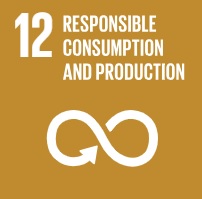

SDG 12 is to: “Ensure sustainable consumption and production patterns.” One of the indicators is the number of national policy instruments to promote sustainable consumption and production patterns. Another one is global fossil fuel subsidies. An increase in domestic recycling and a reduced reliance on the global plastic waste trade are other actions that might help meet the goal. Sustainable Development Goal 12 has 11 targets. The first 8 are outcome targets, which are: implement the 10‑Year Framework of Programs on Sustainable Consumption and Production Patterns; achieve the sustainable management and efficient use of natural resources; reducing by half the per capita global food waste at the retail and consumer levels and the reduction of food losses along production and supply chains, including post-harvest losses; achieving the environmentally sound management of chemicals and all wastes throughout their life cycle; reducing waste generation through prevention, reduction, recycling and reuse; encourage companies to adopt sustainable practices; promote public procurement practices that are sustainable; and ensure that people everywhere have the relevant information and awareness for sustainable development. The three means of implementation targets are: support developing countries to strengthen their scientific and technological capacity; develop and implement tools to monitor sustainable development impacts; and remove market distortions, like fossil fuel subsidies, that encourage wasteful consumption.
THE TARGETS
The PPP helps GSD No 12, 11 targets. Use these eleven targets to create action for responsible consumption and production.
(1)- IMPLEMENT THE 10-YEAR SUSTAINABLE CONSUMPTION AND PRODUCTION FRAMEWORK,
(2)- SUSTAINABLE MANAGEMENT AND USE OF NATURAL RESOURCES,
(3)- HALVE GLOBAL PER CAPITA FOOD WASTE
(4)- RESPONSIBLE MANAGEMENT OF CHEMICALS AND WASTE
(5)- SUBSTANTIALLY REDUCE WASTE GENERATION
(6)- ENCOURAGE COMPANIES TO ADOPT SUSTAINABLE PRACTICES AND SUSTAINABILITY REPORTING
(7)- PROMOTE SUSTAINABLE PUBLIC PROCUREMENT PRACTICES
(8)- PROMOTE UNIVERSAL UNDERSTANDING OF SUSTAINABLE LIFESTYLES
(9)- SUPPORT DEVELOPING COUNTRIES’ SCIENTIFIC &TECHNOLOGICAL CAPACITY FOR SUSTAINABLE CONSUMPTION & PRODUCTION
(10)- DEVELOP AND IMPLEMENT TOOLS TO MONITOR SUSTAINABLE TOURISM
(11)- REMOVE MARKET DISTORTIONS THAT ENCOURAGE WASTEFUL CONSUMPTION
GOAL 13: CLIMATE ACTION/TAKE URGENT ACTION TO COMBAT CLIMATE CHANGE AND ITS IMPACTS.


SDG 13 has five targets which are to be achieved by 2030. They cover a wide range of issues surrounding climate action. The first three targets are outcome targets: Strengthen resilience and adaptive capacity to climate-related disasters; integrate climate change measures into policies and planning; build knowledge and capacity to meet climate change. The remaining two targets are means of implementation targets: To implement the UN Framework Convention on Climate Change (UNFCCC), and to promote mechanisms to raise capacity for planning and management. Along with each target, there are indicators that provide a method to review the overall progress of each target. The UNFCCC is the primary international, intergovernmental forum for negotiating the global response to climate change.
THE TARGETS
The PPP specially can help to make sure that we meet the Global Goals. Use these five (5) targets to create action to combat climate change.
(1)- STRENGTHEN RESILIENCE AND ADAPTIVE CAPACITY TO CLIMATE RELATED DISASTERS
(2)- INTEGRATE CLIMATE CHANGE MEASURES INTO POLICIES AND PLANNING
(3)- BUILD KNOWLEDGE AND CAPACITY TO MEET CLIMATE CHANGE
(4)- IMPLEMENT THE UN FRAMEWORK CONVENTION ON CLIMATE CHANGE
(5)- PROMOTE MECHANISMS TO RAISE CAPACITY FOR PLANNING AND MANAGEMENT
GOAL 14: LIFE BELOW WATER/CONSERVE & SUSTAINABLY USE THE OCEANS, SEAS & MARINE RESOURCES FOR SUSTAINABLE DEVELOPMENT.
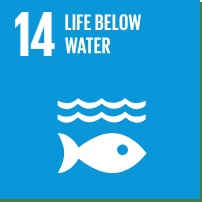

SDG 14 is to: “Conserve and sustainably use the oceans, seas and marine resources for sustainable development.” The current efforts to protect oceans, marine environments and small-scale fishers are not meeting the need to protect the resources. Increased ocean temperatures and oxygen loss act concurrently with ocean acidification to constitute the deadly trio of climate change pressures on the marine environment.
THE TARGETS
The PPP follows these ten (10) targets of SDG 14 to create action to conserve and sustainably use the oceans.
(1)-REDUCE MARINE POLLUTION
(2)-PROTECT AND RESTORE ECOSYSTEMS
(3)-REDUCE OCEAN ACIDIFICATION
(4)- SUSTAINABLE FISHING
(5)- CONSERVE COASTAL AND MARINE AREAS
(6)- END SUBSIDIES CONTRIBUTING TO OVERFISHING
(7)- INCREASE THE ECONOMIC BENEFITS FROM SUSTAINABLE USE OF MARINE RESOURCES
(8)- INCREASE SCIENTIFIC KNOWLEDGE, RESEARCH AND TECHNOLOGY FOR OCEAN HEALTH
(9)- SUPPORT SMALL SCALE FISHERS
(10)- IMPLEMENT AND ENFORCE INTERNATIONAL SEA LAW
GOAL 15: LIFE ON LAND
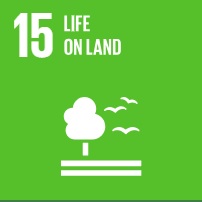

PROTECT, RESTORE AND PROMOTE SUSTAINABLE USE OF TERRESTRIAL ECOSYSTEMS, SUSTAINABLY MANAGE FORESTS, COMBAT DESERTIFICATION, AND HALT AND REVERSE LAND DEGRADATION AND HALT BIODIVERSITY LOSS.
THE TARGETS
The PPP is also highly helpful and useful in SDG 15 twelve (12) targets to create action to protect and restore life on land.
(1)- CONSERVE AND RESTORE TERRESTRIAL AND FRESHWATER ECOSYSTEMS
(2)- END DEFORESTATION AND RESTORE DEGRADED FORESTS
(3)- END DESERTIFICATION AND RESTORE DEGRADED LAND
(4)- ENSURE CONSERVATION OF MOUNTAIN ECOSYSTEMS
(5)- PROTECT BIODIVERSITY AND NATURAL HABITATS
(6)- PROMOTE ACCESS TO GENETIC RESOURCES AND FAIR SHARING OF THE BENEFITS
(7)- ELIMINATE POACHING AND TRAFFICKING OF PROTECTED SPECIES
(8)- PREVENT INVASIVE ALIEN SPECIES ON LAND AND IN WATER ECOSYSTEMS
(9)- INTEGRATE ECOSYSTEM AND BIODIVERSITY IN GOVERNMENTAL PLANNING
(10)- INCREASE FINANCIAL RESOURCES TO CONSERVE AND SUSTAINABLY USE ECOSYSTEM AND BIODIVERSITY
(11)- FINANCE AND INCENTIVIZE SUSTAINABLE FOREST MANAGEMENT
(12- COMBAT GLOBAL POACHING AND TRAFFICKING
GOAL 16: PEACE, JUSTICE, AND STRONG INSTITUTIONS
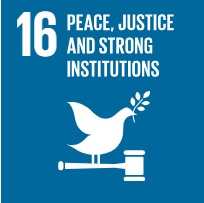

PROMOTE PEACEFUL AND INCLUSIVE SOCIETIES FOR SUSTAINABLE DEVELOPMENT, PROVIDE ACCESS TO JUSTICE FOR ALL AND BUILD EFFECTIVE, ACCOUNTABLE, AND INCLUSIVE INSTITUTIONS AT ALL LEVELS.
SDG 16 has ten (10) outcome targets: Reduce violence; protect children from abuse, exploitation, trafficking and violence; promote the rule of law and ensure equal access to justice; combat organized crime and illicit financial and arms flows, substantially reduce corruption and bribery; develop effective, accountable and transparent institutions; ensure responsive, inclusive and representative decision-making; strengthen the participation in global governance; provide universal legal identity; ensure public access to information and protect fundamental freedoms. There are also two means of implementation targets. national institutions to prevent violence and combat crime and terrorism; promote and enforce non-discriminatory laws and policies.
SDG 16 TARGETS ARE 12.
In the past two decades, the PPP Funding system has been considered very useful and effective in achieving SDG 16, following twelve targets to create action to promote peace, justice, and strong Institutions.
(1)- REDUCE VIOLENCE EVERYWHERE
(2)- PROTECT CHILDREN FROM ABUSE, EXPLOITATION, TRAFFICKING AND VIOLENCE
(3)- PROMOTE THE RULE OF LAW AND ENSURE EQUAL ACCESS TO JUSTICE
(4)- COMBAT ORGANIZED CRIME AND ILLICIT FINANCIAL AND ARMS FLOWS
(5)- SUBSTANTIALLY REDUCE CORRUPTION AND BRIBERY
(6)- DEVELOP EFFECTIVE, ACCOUNTABLE AND TRANSPARENT INSTITUTIONS
(7)- ENSURE RESPONSIVE, INCLUSIVE AND REPRESENTATIVE DECISION-MAKING
(8)- STRENGTHEN THE PARTICIPATION IN GLOBAL GOVERNANCE
(9)- PROVIDE UNIVERSAL LEGAL IDENTITY
(10)- ENSURE PUBLIC ACCESS TO INFORMATION AND PROTECT FUNDAMENTAL FREEDOMS
(11)- STRENGTHEN NATIONAL INSTITUTIONS TO PREVENT VIOLENCE AND COMBAT TERRORISM AND CRIME
(12)- PROMOTE AND ENFORCE NON-DISCRIMINATORY LAWS AND POLICIES
GOAL 17: PARTNERSHIP FOR THE GOALS STRENGTHEN THE MEANS OF IMPLEMENTATION AND REVITALIZE THE GLOBAL PARTNERSHIP FOR SUSTAINABLE DEVELOPMENT.
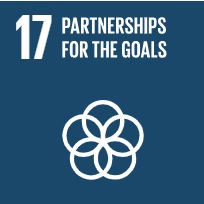

SDG 17 is a vision for improved and more equitable trade, as well as coordinated investment initiatives to promote sustainable development across borders. It is about strengthening and streamlining cooperation between nation-states, both developed and developing, using the SDGs as a shared framework and a shared vision for defining that collaborative way forward. It seeks to promote international trade and an equitable trading system. The Goal has 17 targets to be achieved by 2030, broken down into five categories: finance, technology, capacity building, trade, and systemic issues. Progress towards targets will be measured by 25 indicators. All these targets are regarded as means of implementation targets.
NINETEEN (19) Targets of SDG 17
(1)- MOBILIZE RESOURCES TO IMPROVE DOMESTIC REVENUE COLLECTION
(2)- IMPLEMENT ALL DEVELOPMENT ASSISTANCE COMMITMENTS
(3)- MOBILIZE FINANCIAL RESOURCES FOR DEVELOPING COUNTRIES
(4)- ASSIST DEVELOPING COUNTRIES IN ATTAINING DEBT SUSTAINABILITY
(5)- INVEST IN LEAST DEVELOPED COUNTRIES
(6)- KNOWLEDGE SHARING AND COOPERATION FOR ACCESS TO SCIENCE, TECHNOLOGY, AND INNOVATION
(7)- PROMOTE SUSTAINABLE TECHNOLOGIES TO DEVELOPING COUNTRIES
(8)- STRENGTHEN THE SCIENCE, TECHNOLOGY, AND INNOVATION CAPACITY FOR LEAST DEVELOPED COUNTRIES
(9)- ENHANCE SDG CAPACITY IN DEVELOPING COUNTRIES
(10)- PROMOTE A UNIVERSAL TRADING SYSTEM UNDER THE WTO
(11)- INCREASE THE EXPORTS OF DEVELOPING COUNTRIES
(12)- REMOVE TRADE BARRIERS FOR LEAST DEVELOPED COUNTRIES
(13)- ENHANCE GLOBAL MACROECONOMIC STABILITY
(14)- ENHANCE POLICY COHERENCE FOR SUSTAINABLE DEVELOPMENT
(15)- RESPECT NATIONAL LEADERSHIP TO IMPLEMENT POLICIES FOR THE SUSTAINABLE DEVELOPMENT GOALS
(16)- ENHANCE THE GLOBAL PARTNERSHIP FOR SUSTAINABLE DEVELOPMENT
(17)- ENCOURAGE EFFECTIVE PARTNERSHIPS
(18)- ENHANCE AVAILABILITY OF RELIABLE DATA
(19)- FURTHER DEVELOP MEASUREMENTS OF PROGRESS

